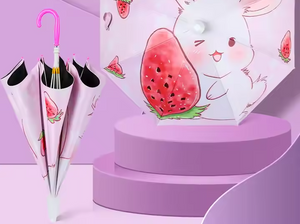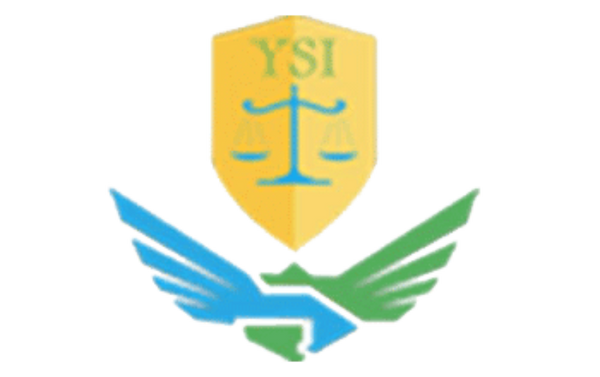
Children's umbrella inspection requirements and methods
Children's umbrellas are small umbrellas designed for children, focusing on safety, lightness and fun. The umbrellas are usually made of environmentally friendly and non-toxic materials, with bright colors, printed with cartoon patterns or cute designs, and are loved by children. The ribs are generally made of fiber or plastic, which is light and has no sharp edges, reducing safety hazards during use. The handles are mostly rounded in design, which fits the size of children's palms and feels comfortable to hold. The opening and closing mechanism is optimized to avoid pinching problems. Children's umbrellas can not only keep out rain, but are also often equipped with sunscreen coatings, suitable for use in various weather conditions. Its cute appearance and safety features make it a must-have companion in children's daily lives, and also make parents more at ease.

Product Categories
According to the opening and closing form of the umbrella, it can be divided into manual-opening children's umbrella and self-opening children's umbrella.
Inspection requirements for children's umbrellas
Safety requirements for use
- The wire head should not be exposed, and the contactable parts during use should not have sharp points or sharp edges that may hurt the human body.
- Pinch points should not occur during normal use.
- The umbrella should be opened and closed continuously for 400 times and the parts should not fall off by themselves.
- The force value of the self-opening button should be between 10N and 30N.
- The umbrella should be opened and closed flexibly and easily. The positioning device should play a positioning role after opening the umbrella, and the umbrella should be closed reliably without losing control.
Umbrella cap or umbrella tip (cover)
- The height of the umbrella cap or umbrella tip (cover) shall not exceed 50mm.
- The shape of the umbrella cap or umbrella tip (cover) should be spherical or arc-shaped, and the diameter of the top should not be less than 15mm.
Pearl Tail
- The end face of the bead tail should be spherical or arc-shaped, and the diameter of the bead tail should not be less than 5mm.
- The depth of the ribs extending into the bead tail shall not be less than 15mm, and the bonding strength shall not be less than 25N.
- The connection strength between the bead tail of the umbrella and the umbrella surface shall not be less than 20N.
handle
The handle diameter shall not be less than 15 mm, and its end surface shall be spherical or arc-shaped.
Component bonding strength
- The umbrella pole and handle should withstand a pulling force of 150N without shifting or falling off.
- The umbrella pole and the umbrella cap should withstand a pulling force of 70N without shifting or falling off.
Limits of Hazardous Substances
- Harmful elements in the handle
The element content of soluble antimony, arsenic, barium, cadmium, chromium, lead, mercury, selenium or any soluble compound of these elements in the product shall not exceed the specified value.
- Umbrella formaldehyde
The formaldehyde content of umbrella surface shall not exceed 300mg/kg.
- Umbrella surface can decompose harmful aromatic amine dyes
The umbrella surface can decompose harmful aromatic amine dyes to no more than 20mg/kg.
Impact strength
After the impact strength test, there should be no damage or opening.
Umbrella buckle tension
The umbrella buckle should not fall off after the 70N tensile test.
Accessories
If the accessories fall off after the 70N tensile test, there should be a warning sign.
Children's Umbrella Inspection Method
Safety requirements for use
- Check visually and by feel.
- Visually check whether there are pinch points during the opening and closing process of the umbrella.
- Open and close the umbrella 400 times continuously and check whether parts have fallen off.
- The self-opening button force is measured with a dynamometer.
- Hold the umbrella handle and turn it back and forth 3 times, then open and close the umbrella 5 times.
Umbrella cap or umbrella tip (cover)
- Use a vernier caliper with an accuracy of 0.02mm to directly measure the maximum distance from the top to the section of the umbrella surface.
- Visually inspect the shape of the umbrella cap or umbrella tip (sleeve) and measure its top diameter with a vernier caliper.
Pearl Tail
- Visually inspect the end face of the bead tail and directly measure the diameter of the bead tail with a vernier caliper with an accuracy of 0.02mm.
- Fix one end of the folded umbrella with a clamp, and use a dynamometer to stretch the bead end along the axial direction of the ribs until the bead end is separated from the ribs, and record the displayed value. Carry out 3 tests respectively and take the minimum value.
- Cut a sample of 120mm long and 50mm wide from the umbrella surface, and fix the bead tail and the umbrella surface on the upper clamp and lower clamp of the tensile testing machine respectively.
- The hollow distance is 80mm, and the test is carried out at a speed of (50±10)mm/min until the bead tail is separated from the umbrella surface. Carry out 3 tests respectively and take the minimum value.
handle
Measured with a vernier caliper with an accuracy of 0.02mm.
Component bonding strength
- Fix the umbrella pole and apply a pulling force of 150N along the axial direction of the umbrella pole on the handle.
- Fix the umbrella pole and apply a pulling force of 70N along the axial direction of the umbrella pole between the umbrella pole and the umbrella cap.
Limits of Hazardous Substances
- The harmful elements shall be tested according to the migration test of specific elements in Appendix C of GB6675-2003.
- The formaldehyde content is tested according to the method specified in GB/T2912.1.
- Degradable harmful aromatic amine dyes are tested according to the method specified in GB/T17592.
Impact strength
The tail and head of the umbrella are dropped freely downward from a height of 800mm on the hard ground for 5 times.
Umbrella buckle tension
Use a special fixture to clamp the buckle cap of the umbrella strap and fix it on the upper fixture of the tensile testing machine. Fix the other end of the umbrella strap in the lower fixture of the tensile testing machine and test at a speed of (50±10)mm/min until the buckle cap of the umbrella strap separates from the umbrella strap. If the tension value exceeds the specified value of the umbrella strap buckle and the buckle cap of the umbrella strap does not separate from the umbrella strap, the test can be terminated.
Inspection mark requirements for children's umbrellas
- Each umbrella should have the following Chinese content
a) Product name;
b) Name and address of the manufacturer;
c) Product quality inspection certificate;
d) Product implementation standard number;
e) Specifications and dimensions;
f) Warning words.
- The product packaging box should have the following Chinese content
a) Product name;
b) Name and address of the manufacturer;
c) Product model;
d) Specifications, dimensions and quantity;
e) Date of production.
Share this product

Children's umbrella inspection requirements and methods
Children's umbrellas are small umbrellas designed for children, focusing on safety, lightness and fun. The umbrellas are usually made of environmentally friendly and non-toxic materials, with bright colors, cartoon patterns or cute designs, and are loved by children. The ribs are generally made of fiber or plastic, which is light and has no sharp edges, reducing safety hazards during use.
